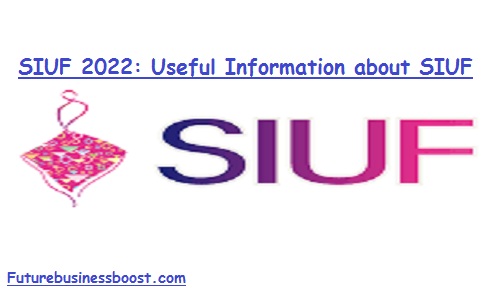Guide To Revolutionizing CRM with Salesforce Integration Solutions
In the dynamic landscape of modern business operations, Salesforce integration stands as a pivotal solution. Seamlessly connecting Salesforce CRM with various systems within an organization’s IT infrastructure. This integration plays a crucial role in enhancing operational efficiency, data accuracy, and customer engagement. By enabling smooth data exchange and automating workflows, Salesforce integration has revolutionized sales operations across industries.
Its ability to integrate with a multitude of systems – from marketing tools and ERP systems to social media platforms – not only streamlines business processes but also provides a comprehensive view of customer activities. This integration is essential for businesses seeking to leverage their data fully and capitalize on growth opportunities in today’s digital era.
Introduction to Salesforce Integration
In an era where customer relationship management (CRM) is pivotal, Salesforce stands out as a leader, capturing about one-third of the global CRM market. The process of Salesforce integration involves connecting Salesforce CRM with other systems within an organization’s IT infrastructure. This seamless integration fosters efficient data exchange and workflow automation, significantly improving sales operations and customer engagement through AI, RPA, and social media integration.
The Growing Significance of Salesforce
The CRM market, valued at $58.82 billion in 2022, is expected to grow substantially. Salesforce, at the forefront of this expansion, offers versatile integration capabilities, making it an invaluable asset for businesses across various industries. Integrating Salesforce with systems like ERP, marketing tools, and social media platforms streamlines operations, enhances data accuracy, and provides a comprehensive view of customer activities.
Why Salesforce CRM Integration Is Vital
In today’s competitive digital landscape, isolated systems are inadequate. Salesforce CRM integration is essential for seamless data exchange, process automation, and maintaining a competitive edge. It boosts productivity, data accuracy, and provides an all-encompassing view of customers, empowering businesses to leverage data effectively.
Benefits of Salesforce Integration Solution
Enhancing Data Accuracy and Consistency
Salesforce’s integration with various data sources eliminates silos, ensuring that all departments have access to the same, up-to-date information. This unified data approach prevents inconsistencies and errors that often arise from manual data entries. For businesses, this means more reliable data for making critical decisions, a significant reduction in data-related discrepancies, and the assurance that every team member is working with the most accurate information available.
Streamlining and Automating Processes
By facilitating data flow across different departments, Salesforce integration breaks down operational barriers, enhancing overall efficiency. This streamlined process not only saves time but also minimizes the risk of errors, often seen in manual operations. Automating routine tasks frees up valuable resources, allowing teams to focus on more strategic activities that directly contribute to business growth. Enhanced process automation also leads to a faster response to market changes, giving businesses a competitive edge.
Gaining a Comprehensive View of Customers
Gaining a Comprehensive View of Customers
Integration with Salesforce brings together disparate customer data points into one cohesive platform. This holistic view not only aids in understanding customer preferences and behaviors but also allows for the crafting of highly customized experiences. With this integration, businesses can track customer journeys more effectively, leading to more accurate targeting and improved customer engagement, ultimately fostering loyalty and enhancing the overall customer experience.
Improving Decision-Making Processes
Having a 360-degree view of customer data empowers businesses to make data-driven decisions. This informed approach can significantly improve the development and delivery of products and services, ensuring they meet customer needs and expectations. The ability to quickly adapt to market changes and customer feedback, thanks to real-time data insights, positions businesses to respond proactively to emerging trends and opportunities.
Boosting Productivity
By integrating Salesforce with ERP and other systems, businesses can automate many of their routine tasks. This automation reduces the time and effort spent on data entry and management, leading to higher efficiency. Teams can redirect their focus from administrative tasks to more strategic activities, enhancing overall productivity. This streamlined workflow also minimizes errors and accelerates various operational processes, contributing to the growth and scalability of the business.
Key Features of Salesforce Integration Solutions
Salesforce is renowned for its comprehensive features that cater to various business needs.
Contact Management
Salesforce’s contact management goes beyond mere data storage. It offers a dynamic, interactive system that captures every interaction with customers, providing a complete history of communications. This feature enables businesses to build deeper relationships with clients by understanding their history and preferences, leading to more personalized and effective interactions.
Opportunity Management
Opportunity management in Salesforce provides a comprehensive view of the sales pipeline. It tracks the progress of deals, predicts revenue potential, and identifies key trends in customer purchasing behaviour. This feature is instrumental in forecasting sales and understanding the effectiveness of sales strategies, allowing businesses to fine-tune their approach for better results.
Salesforce Engage
Salesforce Engage is designed to align sales and marketing efforts seamlessly. It provides sales teams with access to marketing tools and insights, enabling them to engage customers more effectively. This feature enhances the ability to deliver the right message at the right time, increasing the chances of conversion and fostering stronger customer relationships.
Performance Management
Performance management in Salesforce involves setting clear, measurable goals and tracking progress against them. This feature empowers teams with real-time feedback and analytics, enabling them to adjust their strategies promptly. It’s a tool for continuous improvement, driving sales efficiency and effectiveness.
Lead Management
The lead management capability of Salesforce ensures that every lead is tracked and nurtured effectively. It automates the assignment of leads to the right sales representatives based on predefined criteria, enhancing the chances of conversion. This streamlined process ensures that no potential customer slips through the cracks.
File Synchronization and Sharing
Salesforce’s file synchronization and sharing capabilities facilitate smooth collaboration across teams. This feature ensures that everyone has access to the latest documents and information, regardless of their location. It enhances organizational efficiency and ensures that all team members are on the same page.
Email Integration
Integrating Salesforce with email platforms streamlines communication workflows. It brings email interactions into the CRM environment, providing a more holistic view of customer engagement. This integration allows for tracking email communications alongside other customer interactions, offering a more complete customer profile.
Partner Management
Partner management in Salesforce streamlines the entire lifecycle of partner relations, from recruitment to sales enablement. This feature allows for efficient management of partner networks, facilitating better collaboration, communication, and performance tracking, which is crucial for expanding market reach and driving sales through channel partners.
Custom Dashboards and Reports
Salesforce’s custom dashboards and reports offer invaluable business insights. They enable businesses to monitor key performance indicators in real-time, identify trends, and make data-driven decisions. These customizable reports are essential tools for strategic planning and assessing the health of the business.
Salesforce App Integration
The app integration feature extends the functionality of Salesforce, allowing businesses to connect to a wide range of applications and services. This flexibility enhances productivity, as users can access a wealth of tools and data directly within Salesforce, making it a centralized platform for managing various business operations.
Salesforce Integration Options and Approaches
Salesforce offers both app-based and code-based integration options, each addressing specific business needs.
Code-Based Integration Approach
The code-based integration approach in Salesforce is tailored for complex and specific business requirements. It involves writing custom code, usually in Apex, which is Salesforce’s proprietary programming language similar to Java. This method is highly customizable and allows businesses, especially large enterprises, to achieve deep integration with other systems. It’s perfect for those who need a highly tailored solution to align with unique workflows, offering the flexibility to manipulate data and processes in precise ways.
App-Based Integration Approach
For businesses seeking a simpler and more straightforward integration solution, the app-based approach is ideal. Utilizing Salesforce App Builder or leveraging third-party applications like Zapier, this method offers a more accessible and user-friendly integration process. It’s particularly well-suited for small to medium-sized enterprises (SMEs) and solo entrepreneurs who need effective integration without the complexity or resource requirements of custom coding. This approach enables quick adaptation and integration with a variety of platforms, enhancing operational agility.
Best Practices for Salesforce Integration
Successful Salesforce integration demands adherence to best practices.
Defining Business Objectives
Before embarking on Salesforce integration, it’s essential to have a clear roadmap of what you aim to achieve. This involves identifying the specific challenges you want to address, the processes you wish to optimize, and the outcomes you expect. Aligning your integration strategy with your overall business goals ensures that the integration delivers tangible benefits, such as improved customer engagement, streamlined operations, or enhanced data analysis capabilities.
Understanding Data Requirements
A comprehensive understanding of the data involved is key to successful Salesforce integration. This includes knowing the source and destination of the data, the data formats involved, and how frequently data needs to be synchronized. Clarity in data requirements helps in designing an integration that ensures data integrity, complies with data governance standards, and meets user access needs, all while facilitating efficient data transfer.
Utilizing Salesforce Integration Tools
Effective utilization of Salesforce’s array of integration tools can significantly ease the integration process. These tools, including APIs, connectors, and frameworks, are designed to facilitate seamless data flow between Salesforce and other systems. Choosing the right tools based on your integration complexity and business needs can simplify the integration process, reduce development time, and ensure a stable and reliable integration.
Opting for Professional Integration Services
Engaging with professional Salesforce integration services can be a game-changer, especially for complex integration scenarios. These experts bring in-depth knowledge of Salesforce capabilities and industry best practices. They can provide tailored solutions, mitigate risks, and ensure a smooth integration process. This approach not only saves time and resources but also ensures that your Salesforce integration is robust, scalable, and aligned with your business objectives.
Conclusion:
Salesforce integration solutions offer unparalleled benefits, from streamlined processes to improved decision-making capabilities. Businesses looking to maximize their CRM potential should consider Salesforce for its comprehensive features, integration options, and the myriad benefits it brings. As the CRM market continues to grow, Salesforce remains a critical tool for businesses aiming to innovate, enhance operational efficiency, and stay ahead in the competitive landscape.





Pingback: Navigating the Future: Healthcare CRM Market Growth and Trends | Blogwal